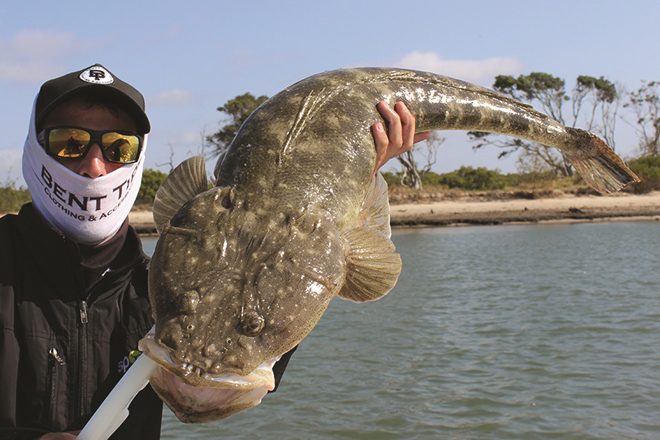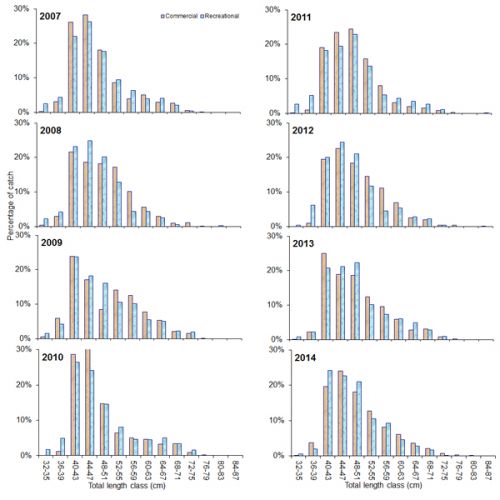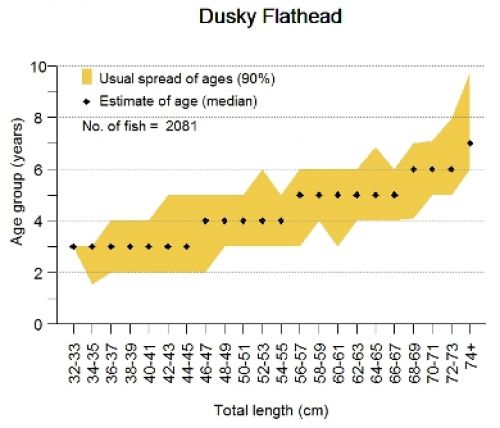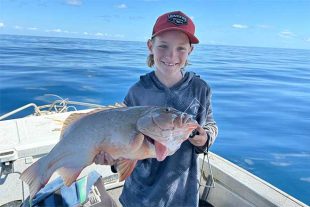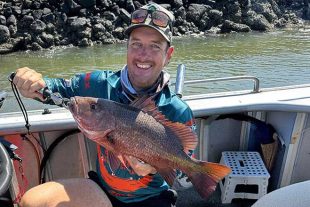DUSKY flathead can be found along the east of coast of Australia from Cairns in north Queensland to the Gippsland lakes in eastern Victoria.
In Queensland, dusky flathead is a key target species, with the recreational fishing sector estimated to take 150 tonnes annually (McGilvray et. al 2014). That is approximately three times the reported commercial harvest. Fisheries Queensland collects length, sex and age information from the harvest of both sectors to assess the status of the Queensland component of the Australian east coast stock. Dusky flathead in Queensland is currently assessed as sustainably fished.
The current monitoring program began in 2007 and is focused on the southern part of the state, between Baffle Creek (north of Bundaberg) and the QLD-NSW border. Research and monitoring projects are also being carried out on dusky flathead in NSW and eastern Victoria.
Recent research has found that, unlike barramundi and yellowfin bream, dusky flathead do not change from males to females (protandrous hermaphroditism) as they grow (Pollock 2015). The sex of an individual is determined at the juvenile stage and is maintained through the lifetime of the fish. The dominance of female fish in the larger size classes and older age groups are a result of the slowing growth rates of male fish in comparison to female fish, and female fish living longer.
The monitoring program is reliant on the participation of recreational and commercial fishers and wholesalers, who allow scientific staff to measure fish and collect frames.
Fish size – length
Dusky flathead are permitted to be harvested between 40cm and 75cm total length (slot limit). Most of the fish in this size range are females. Monitoring program staff measure about 1000 recreationally caught dusky flathead and about 2000 commercially caught dusky flathead each year. Dusky flathead are most commonly harvested in the 40-60cm size range.
Fish age

A dusky flathead otolith as viewed through a microscope. Dots highlight the annual bands, which are similar to the growth rings of a tree.

A typical age distribution of the dusky flathead harvest (all sectors) for one year.
The age of many fish species can be determined by examining their otoliths (ear bones). Fish age, in years, can be estimated by identifying and counting the number of opaque bands, like growth rings in a tree. Each year, whole otoliths of approximately 300 dusky flathead are examined to determine their age. The age is analysed along with fish lengths from the same year to determine the percentage of fish in each age group within the flathead harvest (also referred to as the age structure of the harvest). Results show that the recreational and commercial fishery sectors have very similar harvested age structures.
Dusky flathead can live for more than ten years, but they are most commonly harvested as three year olds. Fish which are seven years or older are less common in the harvest due the protection afforded by the maximum size limit i.e. some seven year old fish have lengths over the 75cm maximum size limit.
How old is your fish?
Measure the total length of your fish then estimate the age using the graph below. For example, a fish of legal length (40cm) is likely to be between two and four years of age.
Thanks to all the stakeholders who generously assisted with the monitoring program by retaining and donating fish frames or by allowing scientific staff to measure catches of fish.
Want to find out more?
Phone 13 25 23, or email FisheriesMonitoring@daf.qld.gov.au
 Bush ‘n Beach Fishing Magazine Location reports & tips for fishing, boating, camping, kayaking, 4WDing in Queensland and Northern NSW
Bush ‘n Beach Fishing Magazine Location reports & tips for fishing, boating, camping, kayaking, 4WDing in Queensland and Northern NSW

